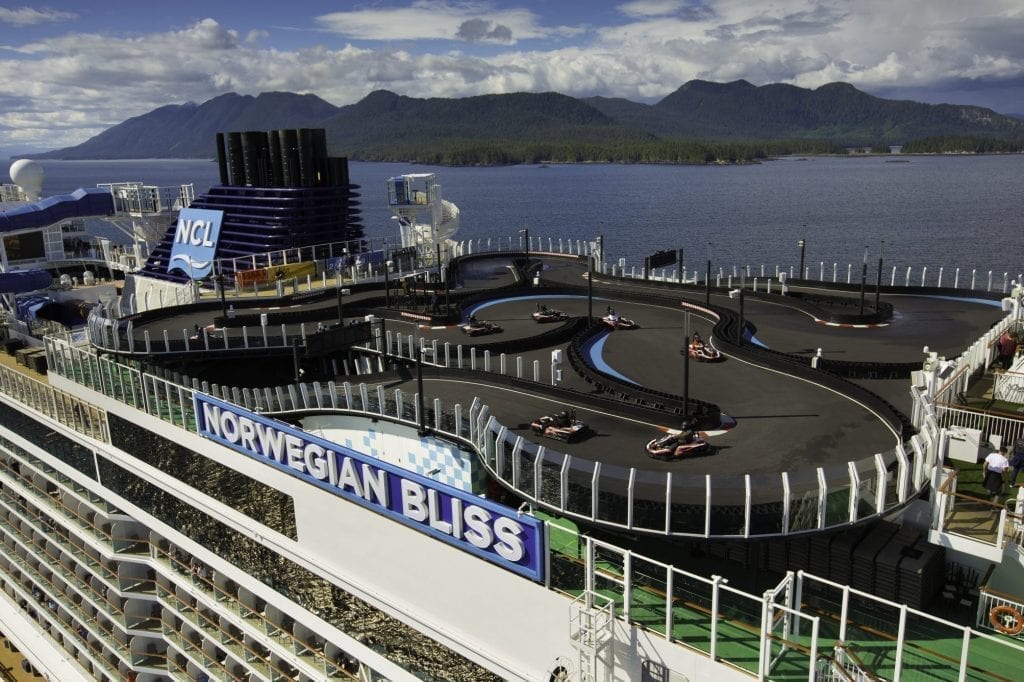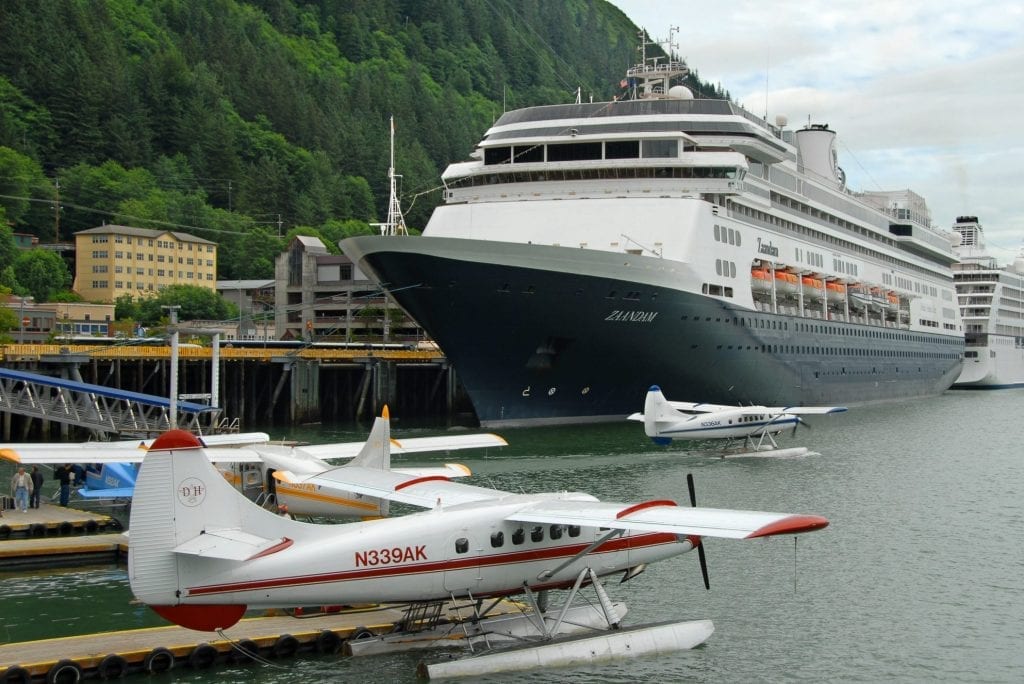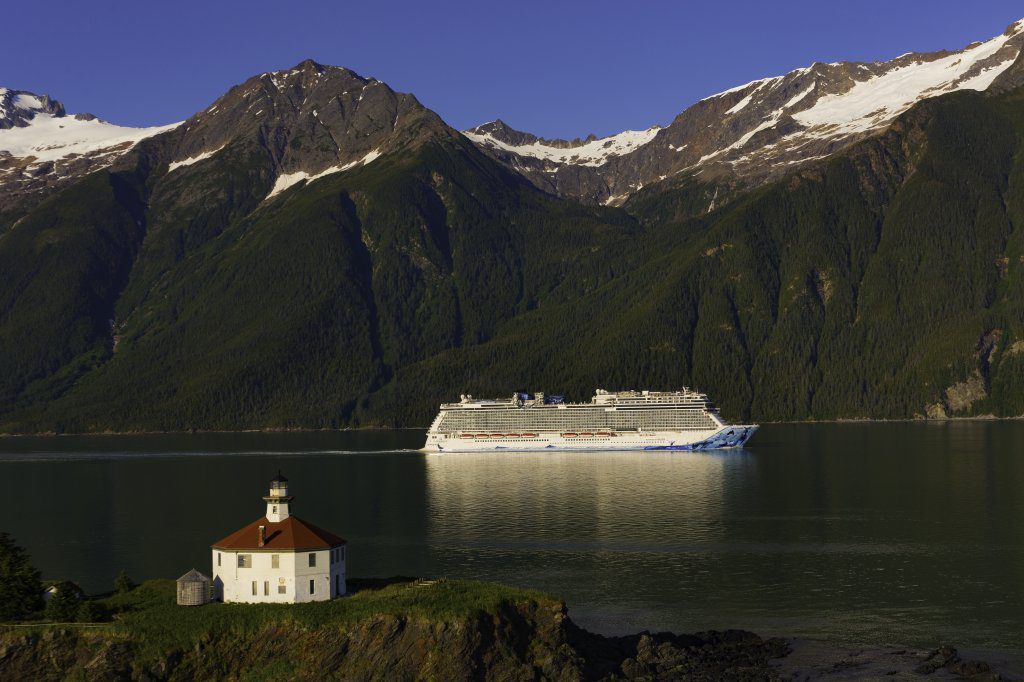Skift Take
Cruise operators go where they see demand, and Alaska has been a hot market for a while now. Will the introduction of more and bigger ships change that dynamic?
Kirby Day remembers the last time cruise passenger growth was exploding in Juneau, Alaska, more than two decades ago: Annual increases approached 14 percent, and locals were worried that the new total of 600,000 visitors was way too much.
“It’s interesting at the time that people were thinking that was too many,” said Day, Holland America Group’s manager of port operations for regions including Alaska and director of Tourism Best Management Practices in Juneau. “We were behind the eight ball, the city was behind the eight ball, people weren’t prepared for it.”
The refrain sounds familiar this year, with record numbers on tap when the parade of seasonal ships begins Sunday as operators send newer, bigger vessels to a market that has consistently delivered high prices. More than 1.3 million passengers are expected this summer, a 16 percent increase from last year; a single-digit bump on top of this year’s gains is on the horizon for 2020. Juneau, where the vast majority of Alaska cruises include a stop, can only accommodate five large ships at once, adding some built-in brakes on the increases.
“It’s a significant increase,” said Day. He said he expects the additional numbers to be absorbed over the course of the cruise season without too much disruption, but that doesn’t mean there won’t be challenges on the ground.
“I think right now the key is to address those challenges and put our best foot forward and challenge those tour operators to find a way to operate their businesses even more so in a community-friendly manner,” he said.
Last week, the Juneau Empire newspaper ran a story asking “How many tourists is too many?” It was tied to a local meeting about sustainability and cruise visits.
“Right now is when we’re just starting to have these discussions in the community again about growth,” Day said.
Anchorage writer Scott McMurren, who puts out the online travel newsletter Alaska Travelgram, called the cruise growth “sort of a mixed bag.”
“We’re thrilled that it is a robust and healthy business,” said McMurren, who is also co-publisher of the Alaska TourSaver, a travel coupon book that many cruise passengers buy. “But we want to make sure that Alaska remains a stable and sustainable partner in this enterprise. Because otherwise you get diminishing returns and it doesn’t become a good place to live and raise your family, and it also does not become the type of destination that has that mysterious allure that has drawn people here for generations.”
Cruise on the Rise
The numbers are climbing because there are more ships coming, but there are also bigger ships — the biggest ever to visit Alaska. An expanded Panama Canal is making it easier for cruise lines to reposition their large vessels to the West Coast. And the destination is rewarding for operators, typically commanding high prices even as previously promising markets such as China have cooled for some.
Last year, Norwegian Cruise Line announced its tailored-for-China ship, Norwegian Joy, would be changing course and instead head to North America in 2019 — Alaska in summer — after a $50 million renovation.
“China’s a good market,” Norwegian Cruise Line President and CEO Andy Stuart told Skift in July. “But it’s not as good as Alaska.”
The operator deployed a giant new ship, the 4,004-passenger Norwegian Bliss, to Alaska in 2018. Stuart described its performance as “a knock-it-out-of-the-park success,” so Norwegian is looking for an even more profitable summer this year with both Bliss and Joy, from the same class, in the market.

Norwegian Bliss is shown in Ketchikan, Alaska, in 2018. Norwegian Cruise Line
“We saw that when Norwegian Bliss was introduced, she had a fantastic reception, and I think that’s in part due to the fact that Alaska has not seen that much new capacity,” Stuart said earlier this month. “Putting a new ship in was a huge boost to the destination. Having essentially two brand-new ships in the market is a very big win.”
Royal Caribbean International’s Ovation of the Seas, a 4,180-passenger ship that launched in 2016, and Princess Cruises’ Royal Princess, which carries 3,600 passengers at double occupancy, are also joining the crowd this year, making a popular market more competitive than ever. All of that has added some pressure to pricing.
During a panel at the Seatrade Cruise Global conference earlier this month, Infinity Research analyst Assia Georgieva said that her pricing checks have shown reductions as a result of the competitive pressure that Norwegian has put on itself and Princess Cruises.
“Still, for ships that are operating in Alaska, the average per diem is so much higher than being in China or the Caribbean that it still helps the overall corporate average,” she said. “In Alaska this year, I think it’s more the additional capacity that’s affecting the market, but I certainly believe over a three-year adjustment period, we’re going to get back to normal.”
On the same panel, Sanford C. Bernstein analyst David Beckel said he thinks Alaska still has room to grow.
“I think Alaska is a market where adding supply can add demand,” he said. “I’m certainly not concerned about what we’re seeing [in] pricing.”
But during an earnings call last month, Carnival Corp. executives said prices in Alaska are shaping up lower than last year’s record levels. Chief Financial Officer David Bernstein said the company has 17 ships there, representing an 8 percent capacity increase.
Cunard, a Carnival Corp. line, has a ship in the market for the first time in 20 years. Josh Leibowitz, senior vice president for Cunard North America, said the destination’s appeal to first-time cruisers is part of the reason it’s become so popular for operators.
“People wanted to go,” he said. “We want to build up the North American market for Cunard. People wanted to go, and so we’re here.”
Other Carnival Corp. brands are going big. To mark 50 years in Alaska, Princess Cruises has its largest deployment ever this year, with seven ships including Royal Princess. Holland America Line, which has been in the market for more than 70 years, has eight ships there and some new branding to set itself apart: “We Are Alaska.”
“There’s so much energy in Alaska, a lot of entrants are joining,” said Orlando Ashford, president of Holland America Line. “You have to go with somebody who’s been doing it a while, because you’ll see it a little bit better.”
He made the case that Holland America’s ships — which carry around 2,000 passengers — are better suited to the destination than larger, newer entrants.
“I actually think that message of biggest goes directly against the value proposition of experiencing Alaska,” Ashford said. “You want to go experience Alaska with Alaskans, not with everybody from pick your city in the [rest of the] United States. You come into some of these ports with these large ships, and it’s overwhelming these small towns.”

A Holland America Line ship is shown in Juneau. Andy Newman/Holland America Line
Ups and Downs
The number of passengers has been growing fairly steadily since 2010 and 2011, when traffic dipped following the introduction of a head tax a few years earlier. But lawmakers agreed to lower the tax in 2010 amid an outcry — and lawsuit — from the industry, and the annual flotilla returned in greater numbers.
Over the years, cruise lines and local communities have invested in infrastructure to better handle the visits and expand offerings for passengers.
And there have been other lawsuits: Cruise Lines International Association Alaska sued Juneau over the way it used revenue from the fees it charged cruise lines.
“It was a long and litigious three years,” said John Binkley, president of the Alaska chapter. “And that’s difficult when you want to be partners with a community and want to grow the industry and yet you’re fighting.”
Ultimately, the sides reached a settlement in March that will allow the city to use fees to pay for services such as crossing guards, signs, infrastructure improvement, security patrols, beautification, and restrooms. The city paid the association’s legal fees as part of the agreement.
Binkley said the focus now is on how to “grow and sustain the high quality of life” for locals in Alaska. Avoiding another year of double-digit increases in 2020 will be a start.
“It stretches everything when you grow so quickly,” he said. “I think it’s more sustainable when you can do it at a more metered pace.”
Getting Ready
On a recent stretch of sunny days, Kirby Day — the director of the tourism best practices group — said people were out scraping, pressure washing, painting, and otherwise preparing buildings in downtown Juneau for the start of the cruise season. Delivery trucks were stocking up retailers, and buses and tour vehicles were on the road as drivers got trained.
“People are still doing what they need to do, training, filling stores with product, restaurants are open, and it’s kind of vibrant without any visitors,” he said.
And he is doing plenty of meetings — with residents, tour operators, press, basically anyone who wants to talk about the upcoming season and ways to ease the impact.
The Tourism Best Management Practices program, which kicked off in 1997 with 15 guidelines, now has 98. They include streets to avoid in Juneau, places where left turns are not acceptable, timing of tour departures, and wildlife viewing practices, among many others. There are some new additions this year, about slowing down in certain marine areas, keeping buses out of a couple of streets in a neighborhood, and staying away from certain areas frequented by locals.
More than 80 companies have signed on, including cruise lines, tour operators, restaurants, and retailers. Day said other destinations in Alaska have asked for the program’s template, and cruise ports in other parts of the world have expressed interest as well.
“I think we’re in a much better position today to handle the growth than we were in the mid-90s when this program wasn’t around,” Day said.
He believes the additional 175,000 or so people who visit this year will essentially blend in over the course of the season, which stretches over nearly five months.
“That doesn’t mean somebody’s not going to get stuck behind a slow bus or hear a helicopter,” he said. “But I think it will blend in. I think the sheer number kind of makes people sit up and take notice.”
McMurren, the Anchorage writer, said the destination is wrestling with all of the planning, coordination, and fallout that comes with depending heavily on cruise tourism. But, he said, the importance of the industry can’t be ignored.
“A lot of these people would never see any of Alaska at all if there wasn’t this $699 special on a seven-day cruise,” he said.
“Can we handle it? Yes,” McMurren said. “Will it change our destination? Yes, there’s no way for it not to with that type of impact, thousands and thousands of people coming daily. … But our job as Alaskans is to make sure that this remains a sustainable destination for generations to come.”
The Daily Newsletter
Our daily coverage of the global travel industry. Written by editors and analysts from across Skift’s brands.
Have a confidential tip for Skift? Get in touch
Tags: alaska, cunard, holland america line, norwegian cruise line, overtourism, princess cruises, tourism
Photo credit: Norwegian Bliss is shown in the Lynn Canal in Southeast Alaska in this promotional photo. The destination is anticipating a major increase in passengers this year. Norwegian Cruise Line
